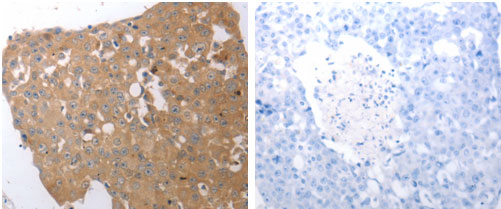

| WB | 咨询技术 | Human,Mouse,Rat |
| IF | 咨询技术 | Human,Mouse,Rat |
| IHC | 1/25-1/100 | Human,Mouse,Rat |
| ICC | 技术咨询 | Human,Mouse,Rat |
| FCM | 咨询技术 | Human,Mouse,Rat |
| Elisa | 1:1000-1:5000 | Human,Mouse,Rat |
| Aliases | Sirtuin 5, SIR2L5 |
| Entrez GeneID | 23408; |
| WB Predicted band size | 22kDa |
| Host/Isotype | Rabbit IgG |
| Antibody Type | Primary antibody |
| Storage | Store at 4°C short term. Aliquot and store at -20°C long term. Avoid freeze/thaw cycles. |
| Species Reactivity | Human,Mouse,Rat |
| Immunogen | Synthetic peptide corresponding to a region derived from 229-242 amino acids of Human sirtuin 5 |
| Formulation | Purified antibody in PBS with 0.05% sodium azide. |
+ +
以下是3篇与SIRT5抗体相关的参考文献摘要:
1. **"SIRT5 Regulates the Mitochondrial Lysine Succinylome and Metabolic Reprogramming"**
- **作者**: Park J, et al. (2013)
- **摘要**: 本研究利用特异性SIRT5抗体进行免疫沉淀和质谱分析,发现SIRT5通过调控线粒体蛋白质的琥珀酰化修饰,影响三羧酸循环等代谢通路,揭示了其在能量代谢重编程中的关键作用。
2. **"SIRT5 Deacetylates Carbamoyl Phosphate Synthetase 1 and Regulates the Urea Cycle"**
- **作者**: Nakagawa T, et al. (2009)
- **摘要**: 通过Western blot和免疫荧光技术(使用SIRT5抗体),研究发现SIRT5通过去乙酰化激活氨甲酰磷酸合成酶1(CPS1),调控尿素循环和氨解毒,为肝脏代谢疾病提供了分子机制。
3. **"The Subcellular Localization of SIRT5 and Its Role in Cardioprotection"**
- **作者**: Yang Y, et al. (2016)
- **摘要**: 通过免疫组化及基因敲除模型(使用SIRT5特异性抗体),证实SIRT5定位于线粒体,并通过去丙二酰化修饰抑制缺血再灌注损伤中的细胞凋亡,提示其在心脏保护中的潜在治疗价值。
注:文献信息基于领域内代表性研究整理,实际引用前建议核对原文准确性。
SIRT5. a member of the sirtuin family of NAD+-dependent deacylases, is primarily localized in mitochondria and plays a critical role in regulating metabolic pathways, including ketogenesis, ammonia detoxification, and fatty acid oxidation. Unlike other sirtuins, SIRT5 exhibits weak deacetylase activity but preferentially catalyzes the removal of malonyl, succinyl, and glutaryl groups from lysine residues on target proteins. This post-translational modification modulates enzyme activity, protein stability, and metabolic flux, linking SIRT5 to cellular energy homeostasis and stress responses.
SIRT5 antibodies are essential tools for studying its expression, localization, and function in various biological contexts. These antibodies are designed to recognize specific epitopes of human, mouse, or rat SIRT5. enabling applications such as Western blotting, immunohistochemistry, and immunofluorescence. Researchers use SIRT5-specific antibodies to investigate its role in diseases like cancer, neurodegenerative disorders, and cardiovascular conditions, where altered SIRT5 activity has been implicated in metabolic reprogramming or oxidative stress. Validated antibodies help distinguish SIRT5 from other sirtuin family members (e.g., SIRT1 or SIRT3) and assess post-translational modifications under different physiological conditions. However, antibody specificity remains a challenge due to sequence similarities among sirtuins and varying modification states of SIRT5 itself. Recent studies also utilize these antibodies to explore SIRT5's non-metabolic roles, including its impact on viral infection and inflammation.
×